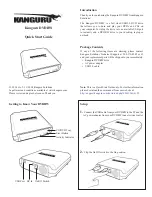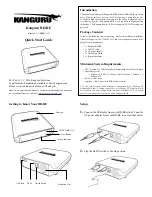
4.
Mistakes a n d error m e s s a g e s .
There is always the possibility that something could go wrong, either
because you m a k e a mistake in typing c o m m a n d s , or in the way the
system responds which could m e a n that a fault has developed. To help
you identify the p r o b l e m and in some cases put it right, there are a
n u m b e r of error messages which are displayed on the screen in the event
of some (not all) p r o b l e m situations arising. The A p p e n d i x is a list of
these messages and what they mean.
5.
F i l e n a m e s
Where you see (filename), this means you have to type in the n a m e of a
file and there are certain rules regarding the n u m b e r of characters you
can put in a filename, and what those characters are.
A filename can consist of three parts: the first part is a n u m b e r which
identifies the
disc drive,
the second part is called the
name
and the third
p a r t is called the
extension.
T h e n a m e part can be a m a x i m u m of any six alphanumeric characters in
any order, and the extension part can be a m a x i m u m of any three
alphanumeric characters, also in any order.
F o r e x a m p l e " 1 - P R O G 1 . J O B " is a valid filename when the disc drive is
n u m b e r 1, the n a m e part is P R O G 1 and the extension is J O B .
T h e extension part is optional, and the drive n u m b e r is strictly speaking
not part of the filename since it merely refers to the disc drive. Y o u will
see in the C O P Y instruction (Examples) there are some filenames
without extensions, some without drive n u m b e r s and some without
both. If you specify the filename as being just the disc drive n u m b e r ,
there's no need to put double quotes ( . . . . ) round it. If however you do
specify a n a m e part, (with or without an extension and irrespective of
whether or not there's a disc drive) you must put double quotes round it
as shown above.
Below are some examples of correct and incorrect filenames:
21
















































